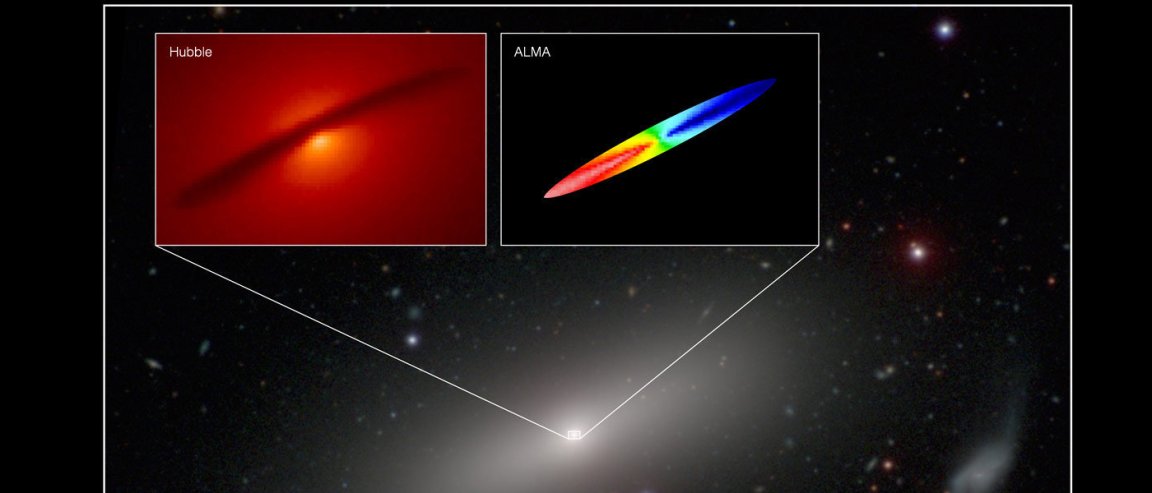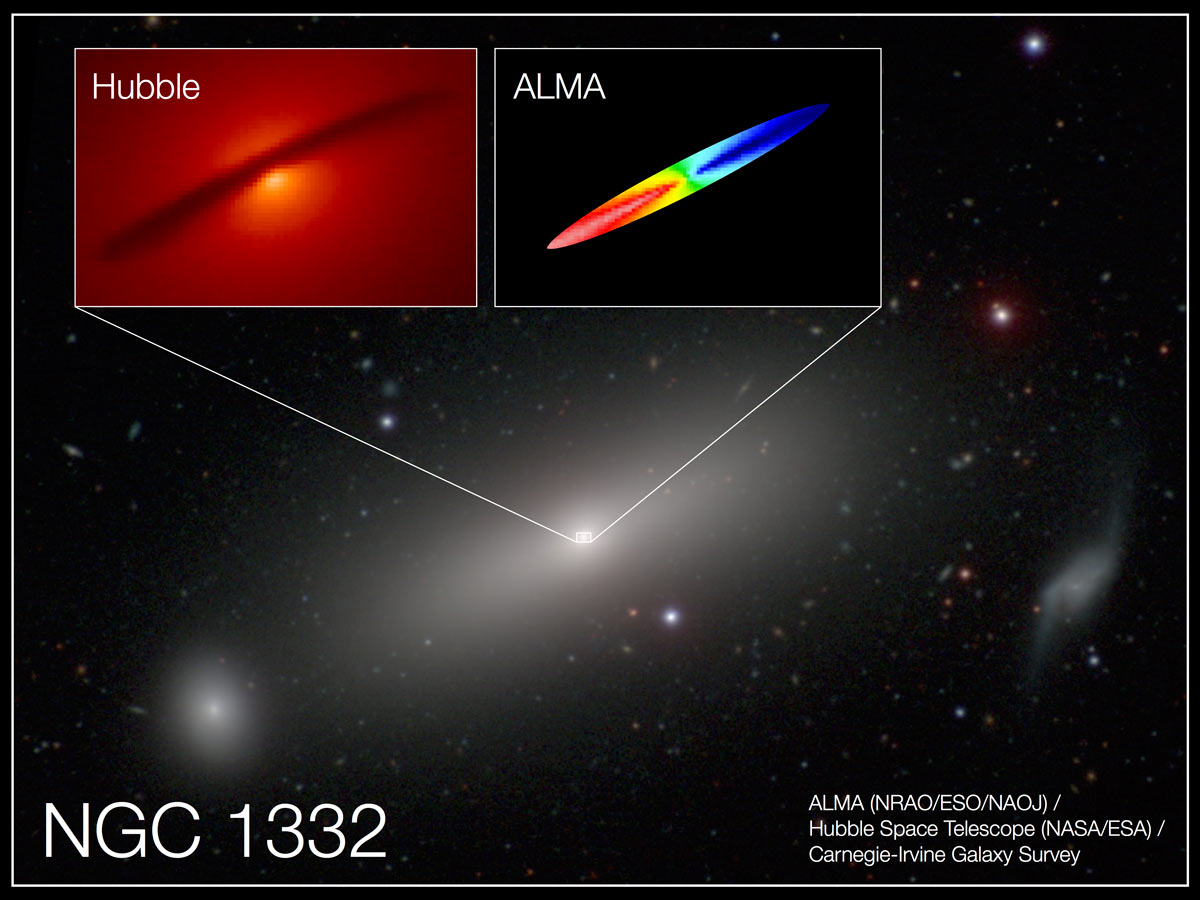
A Bigger, Badder Gun?
When we put the data from the previous studies that were conducted to measure the mass of the supermassive black hole within the galaxy NGC 1332 together, the results vary from 500 million to 1.5 billion solar masses. This is kind of a huge inconsistency; however, thanks to the Atacama Large Millimeter/submillimeter Array (ALMA), the results just got a whole lot clearer.
A new study conducted by astronomers at the University of California, Irvine demonstrated the capabilities of the new radio telescope by measuring the mass of the black hole of the aforementioned galaxy, which is approximately 73 million light-years away.
The results revealed that the gases near the black hole’s center are traveling at speeds over 500 km/s (310.7 mi/s). As such, the calculated mass is about 660 million times greater the Sun and 150 times the mass of the black hole at the center of the Milky Way, confirming that the lower estimates from previous data are more accurate.

A New Window
Most errors in the observations of cosmic bodies beyond our own galaxy come from the effect of the stars and other objects surrounding the subject under study. Even the black hole within NGC 1332 is said to just be a tiny speck when all of the other masses near it are taken into consideration.
The researchers assert that the new telescope’s close-in observations take on a different approach that provides higher accuracy.
Optically, the Hubble Space Telescope makes observations of the hot, ionized gases forming as disks around dense bodies, which could lead to lower precision due to the turbulent nature of these gases. The ALMA, on the other hand, can map the cold, dense component of these disks, which is reported to be a more reliable method.
The astronomers point out that this technique could be applied to the other galaxies out in the known universe, emphasizing that the black hole that they just measured is relatively “modest” compared to most behemoths out there (but it’s still quite the behemoth).
The study has been published in the Astrophysical Journal Letters